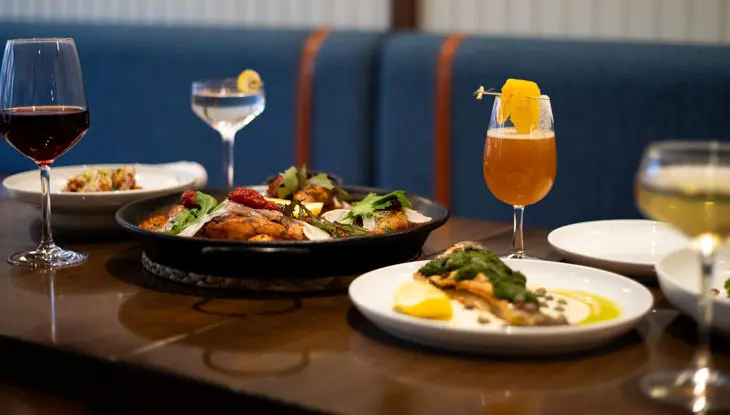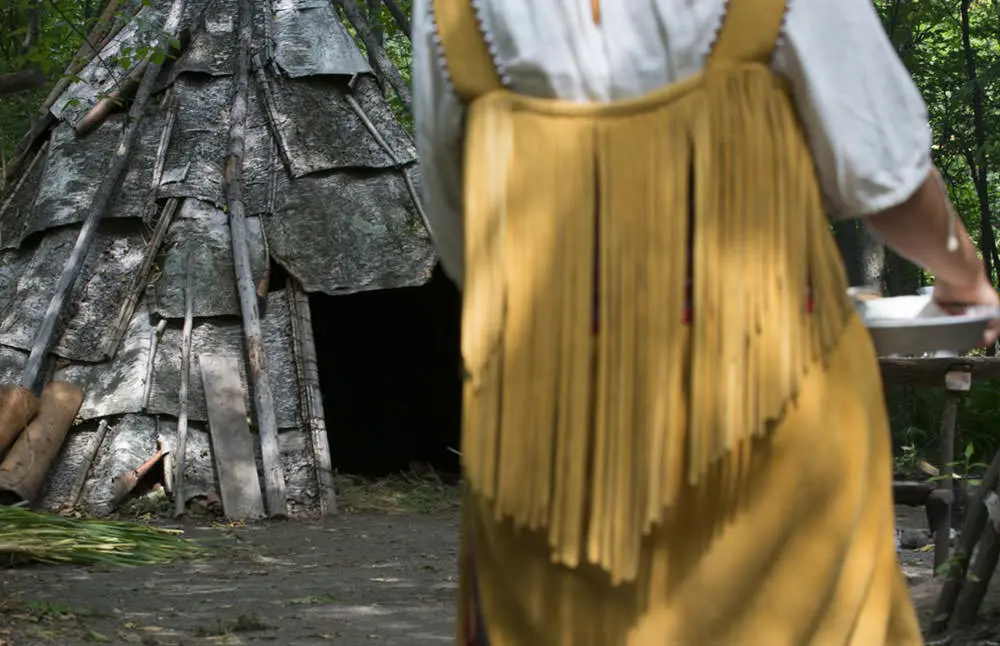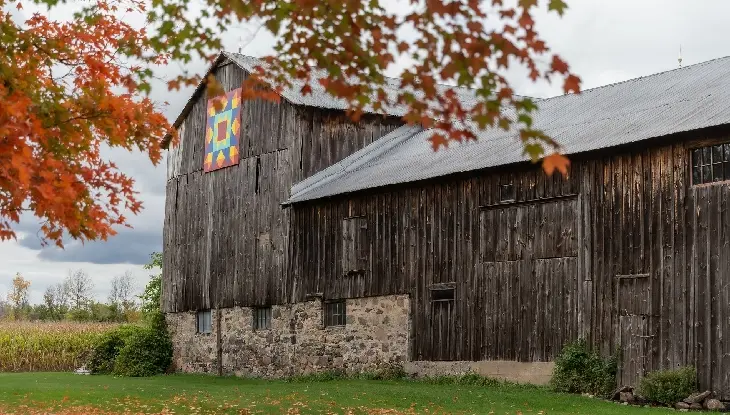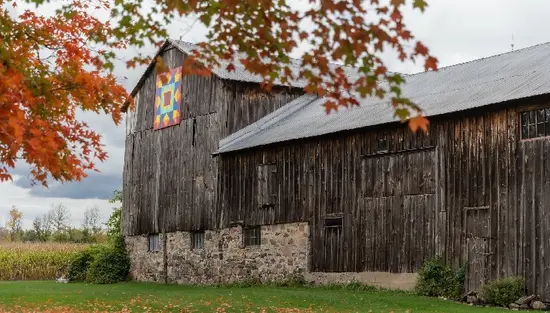Upper Canada Village
Walking into Upper Canada Village feels like heading through a time warp—with gorgeous heritage buildings and staff playing the part of 19th-century villagers so well you almost believe it’s real. Even the transport around the village is authentic, with wagons, tow scows (horse-drawn barges) and a tiny train.
This unique heritage site offers the chance to see and hear what life was like in a typical rural Canadian village on the banks of the St. Lawrence River.
Upper Canada Village | Southeastern Ontario
How to get to Upper Canada Village
Location: 13740 County Road 2, Morrisburg
By car: Located just east of Morrisburg, Upper Canada Village is only an hour’s drive from Ottawa. Take the Trans-Canada Highway from Ottawa or the ON-401 East from the west of Ontario. Free on-site parking is available.
Know before you go
Admission tickets are available for purchase online. It is recommended that you buy your tickets before arriving.
Upper Canada Village is open from mid-May to mid-October every year. However, there are also special holiday weekends during the winter months when the village is open.
Plan to spend around three to four hours at Upper Canada Village.
Things to do at Upper Canada Village
Discover more activities and experiences.
See demonstrations
Learn about specialized skills and tools of tradespeople in the 1860s with demonstrations of traditional skills like weaving, blacksmithing and broom-making.
Go for a historic ride
Take a ride in a horse-drawn carriage, wagon ride or ride a tow scow (an old-fashioned barge) on the canal.
Find tasty treats
Sample a variety of foods in the village’s restaurants, including the Village Cafe in the Village Store or grab a BeaverTail pastry.
Participate in village events
Enjoy Upper Canada Village events such as Pumpkinferno or the winter Alight at Night festival.
Collect souvenirs
Shop for quality Canadian crafts and items such as tinware, yarn and blankets at The Village Store, one of Eastern Ontario’s biggest shops.
Sleep in the village
Staying overnight in the cozy, historic Montgomery House or book a private getaway in the spacious, two-story Guest House.
Articles and itineraries
Get ideas and inspiration for your next trip.

Interesting facts about Upper Canada Village
Upper Canada Village may showcase life back in the 1860s, but its own history is more recent.
Many of the village’s heritage buildings once existed as part of nine 18th-century communities along the banks of the St. Lawrence River. Now known as the “Lost Villages,” they were submerged by the creation of the St. Lawrence Seaway in the 1950s and disappeared under the surface of the rising water.
Over 6,500 people and 530 buildings were relocated. To preserve this slice of regional history, 40 of the buildings were chosen to take pride of place in the newly designated Upper Canada Village.
Accessibility Features
Accessible parking space
Accessible parking provides a place for people with disabilities to park and space to get in and out of their vehicles safely. It also provides access to the main accessible entrance and/or any other accessible entrances. Most users of wheelchairs need at least three feet of clearance to get in and out of their vehicles.
Accessible outdoor eating area
Places located outside where members of the public can sit at a table and eat (for example, outdoor food courts at amusement parks or picnic tables in parks). This includes accessible tables with enough clear space around and under so that people using a wheelchair or other mobility aid can easily access. Also, the ground leading to and under the accessible tables is level, firm and stable.
Accessible restaurant
Designed to be accessible to persons with varying disabilities, including those using mobility aids. They include an accessible entrance, adequate maneuvering space, nearby accessible washrooms, tables with removable chairs and sufficient knee clearance, menus in alternate formats, and cafeteria or buffet counters that are reachable for mobility device users.
Automatic doors
Main entrance doors and other accessible entrances and exits are power assisted to allow easy access.
Ramps
An inclined plane that allows wheelchair users and others to access buildings and navigate between different levels.
Sensory-friendly areas
Crafted to minimize overwhelming sensory input. This includes features like dimmed lighting, noise-cancelling options and calming textures.
Accessible washroom
At least one washroom stall larger than the others to accommodate adequate maneuvering space for mobility devices. They also include grab bars, transfer space, an accessible door latch, sink with knee clearance, and lever handles or automatic sensor faucets.
Universal washroom
A separate washroom that allows an individual in a wheelchair to use a self-contained washroom facility. They include grab bars, transfer space, an accessible door handle/lock, accessible sink with knee clearance, easy-to-use/automatic faucets, adult change table and emergency call systems. It is also universal, allowing people of any gender to use it comfortably, including with a support person if needed.
Information available in alternative format
Alternative formats present information beyond standard text, such as electronic text, audio, captioning and Braille. Accessible formats are available for menus, brochures, maps, signage or websites. Communication support must be provided in a timely manner upon request, at no extra charge, in consultation with the person making the request.
Service animals welcome
Can be identified by visual indicators (such as a vest or harness) or documentation from a regulated health professional confirming the animal is necessary due to a disability. In Ontario, service animals are allowed in all public spaces unless otherwise prohibited by law. A service animal is not a pet; it is trained to perform tasks to assist a person with a disability, such as guiding individuals with vision impairments, alerting to sounds for those with hearing impairments, assisting during seizures, retrieving items, or helping manage psychiatric and neurological disabilities. There are no restrictions on the type of animal used as a service animal in Ontario. If the animal is not easily identifiable, the person can provide documentation from a regulated health professional confirming the need for the service animal.
Support persons welcome
By law, you must allow a person with a disability to be accompanied by his or her support person while in the areas of your business that are open to the public. A support person is an individual hired or chosen by a person with a disability to provide services or assistance with communication, mobility, personal care, medical needs or with accessing goods, services or facilities. If you charge an admission fee at your business, you must let people know you charge an additional fee for a support person.
Wheelchair and/or mobility devices available
Mobility devices such as wheelchairs, walkers, canes or mobility scooters are available for people to borrow or rent at the business. If you make wheelchairs or assistive devices available to the public, it is important to make sure that they are properly maintained and periodically serviced so they are in good working order and do not present a safety risk.
Last updated: September 25, 2025








